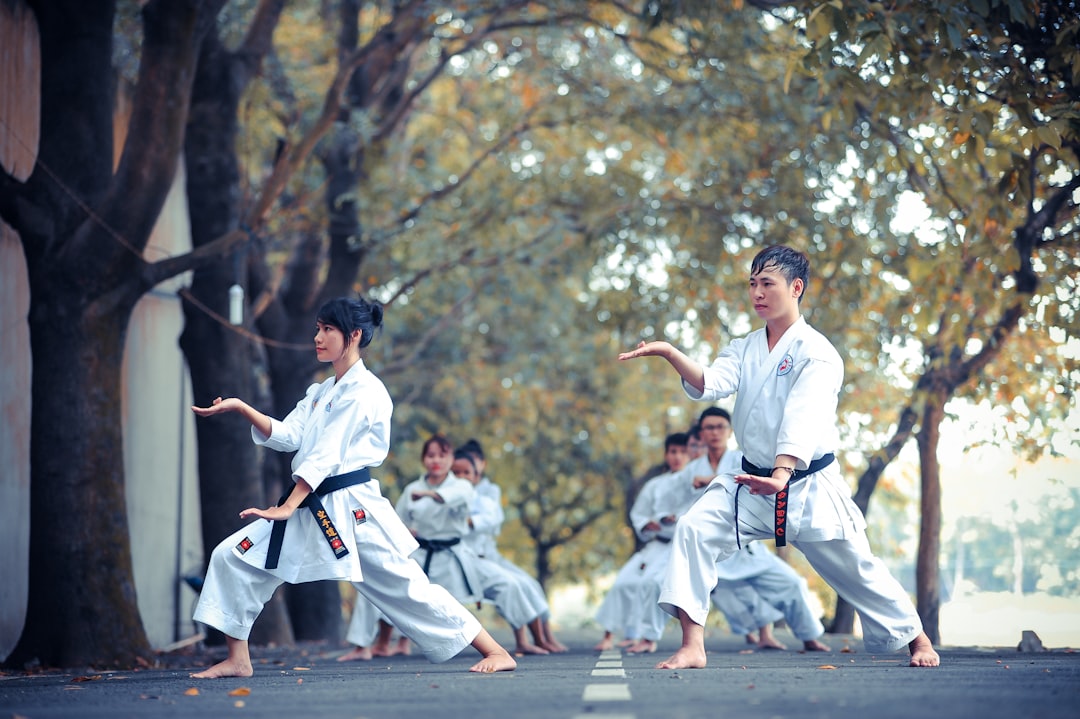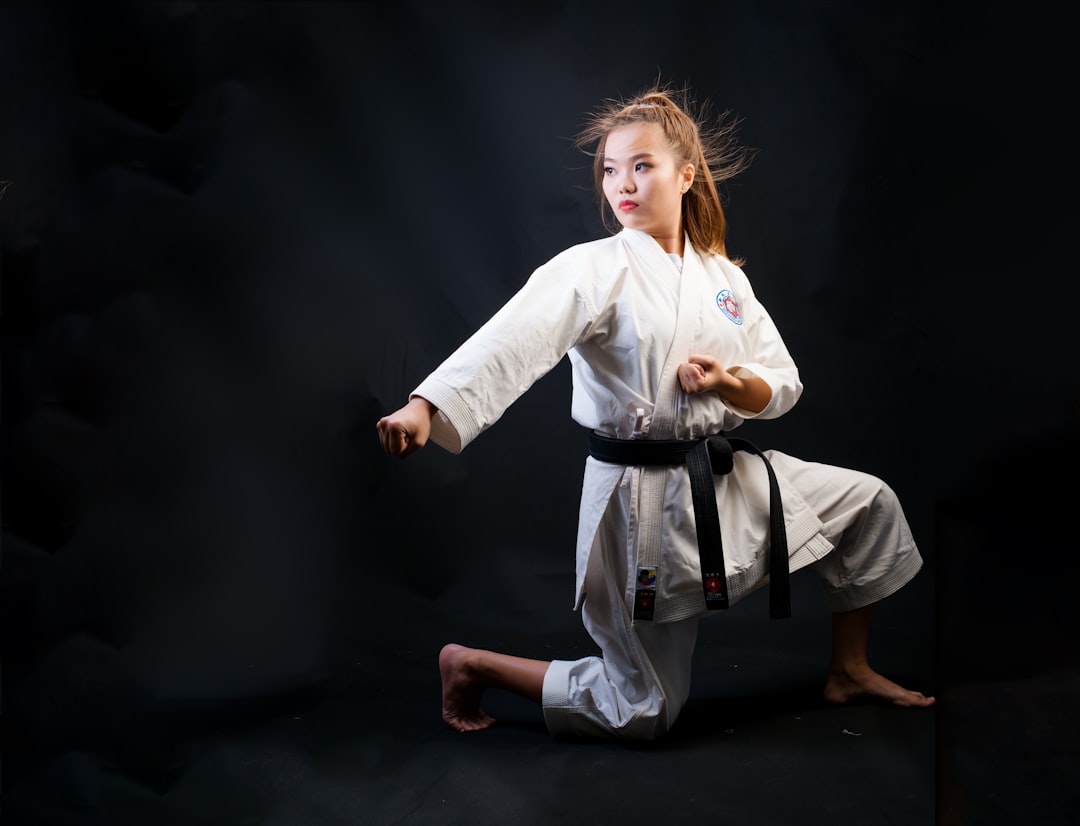When preparing for a karate session or tournament, choosing the right karate outfit, known as a keikogi or gi, is essential. It should offer a balance between fit and flexibility to ensure unhindered movement while respecting the sport's traditions. The ideal gi fits snugly, allowing for full range of motion without being too tight or loose. It includes a jacket, trousers, and belt, with rank indicated by the belt's color. For safety and optimal performance, additional gear such as a mouthguard and groin guard (for men) are recommended, along with any necessary orthopedic supports or medical equipment for personal health conditions. Hydration is critical, so a sealed water bottle is advised to maintain hydration levels without interrupting training. Undergarments should be fresh and worn beneath the trousers. Considering the climate, opt for a gi that suits the temperature, and ensure you have proper footwear for ankle and foot support. Protective gear like grip enhancers or hand protection, as well as a well-tied obi, complete your gear for a focused and effective karate session or competition. Staying hydrated and managing sweat with a towel are key practices to enhance performance and safety.
Embarking on a journey in karate requires careful preparation to ensure optimal performance and safety. This article serves as a comprehensive guide for karateka at all levels, detailing the essential elements of a karate outfit and providing a tailored packing list for effective training. Whether you’re a beginner or an experienced practitioner, understanding what to bring for your karate practice can significantly enhance your experience. From the proper attire to protective gear, we cover all you need to know to excel in this dynamic martial art.
- Essential Elements of a Karate Outfit: What to Bring for Optimal Performance
- Packing List for Karate Practitioners: Gear and Accessories for Effective Training
Essential Elements of a Karate Outfit: What to Bring for Optimal Performance

When preparing for a karate practice or competition, selecting the right karate outfit, known as a keikogi or gi, is crucial for both performance and respect for the tradition. A typical karate gi should fit properly, allowing for full range of motion without being overly baggy or restrictive. It typically consists of a jacket, trousers, and belt, with the color often denoting the wearer’s rank. Are the sleeves and pants designed to facilitate unhindered movement during practice? The jacket should have long sleeves that can be rolled up easily, and the trousers should have a comfortable fit without being too loose, as this can catch on techniques performed. Additionally, ensure your belt, or obi, is tied securely but not so tight as to limit breathing.
Beyond the gi, there are other essential elements to consider for optimal performance. A well-fitted mouthguard protects your teeth and jaw during impact, while a groin guard for men provides additional safety. Both are required in many competitive settings. Do you require orthopedic supports or have any medical conditions that necessitate specific gear? If so, bring these items as well to ensure your safety and comfort throughout the session. Hydration is also key; a sealed water bottle can keep you hydrated without interrupting training. Lastly, remember to bring a clean set of undergarments, as they are worn underneath the trousers of the gi. These items, when combined with your karate outfit, will ensure you are fully prepared for an effective and safe practice or competition.
Packing List for Karate Practitioners: Gear and Accessories for Effective Training

When preparing for a karate session, selecting the right gear is crucial to ensure comfort, safety, and optimal performance. A karate outfit, commonly known as a gi, is the quintessential piece of equipment for any practitioner. The gi should fit properly, allowing for full range of motion while training. Is a traditional cotton or canvas gi suitable for all climates and conditions? Not necessarily; consider the material’s weight and your personal comfort. For warmer environments, a lighter weight gi made from a blend that wicks away moisture is preferable. In cooler settings, a heavier fabric will provide more coverage and warmth.
Beyond the gi, essential accessories for effective karate training include a mouthguard to protect your teeth and gums during sparring, as well as grip enhancers for a firmer hold on training equipment. Are hand wraps or gloves necessary for protecting your hands? Absolutely; they cushion your knuckles and prevent blisters or bruising. A belt, known as an obi in karate, holds your gi closed and is also a rank indicator. Do not forget to pack a bottle of water to stay hydrated throughout the session, as well as a towel for wiping away sweat. Proper footwear, such as karate dojos or training shoes, will support your feet and ankles during practice on various surfaces. These items, combined with the right mindset, will ensure that your karate training is both effective and enjoyable.
Choosing the right attire and gear is crucial for any karateka’s performance and safety during practice. This article has outlined the essential elements of a proper karate outfit, known as a keikogi, and provided a comprehensive packing list for karate practitioners to ensure their training is both effective and aligned with traditional practices. Whether you are a beginner or an experienced martial artist, having the right gear can make all the difference in your karate journey. Remember to pack your keikogi, belt, appropriate footwear, and any necessary protective equipment as recommended. With these items checked off your list, you’re ready to step onto the mat with confidence and focus on honing your skills.
